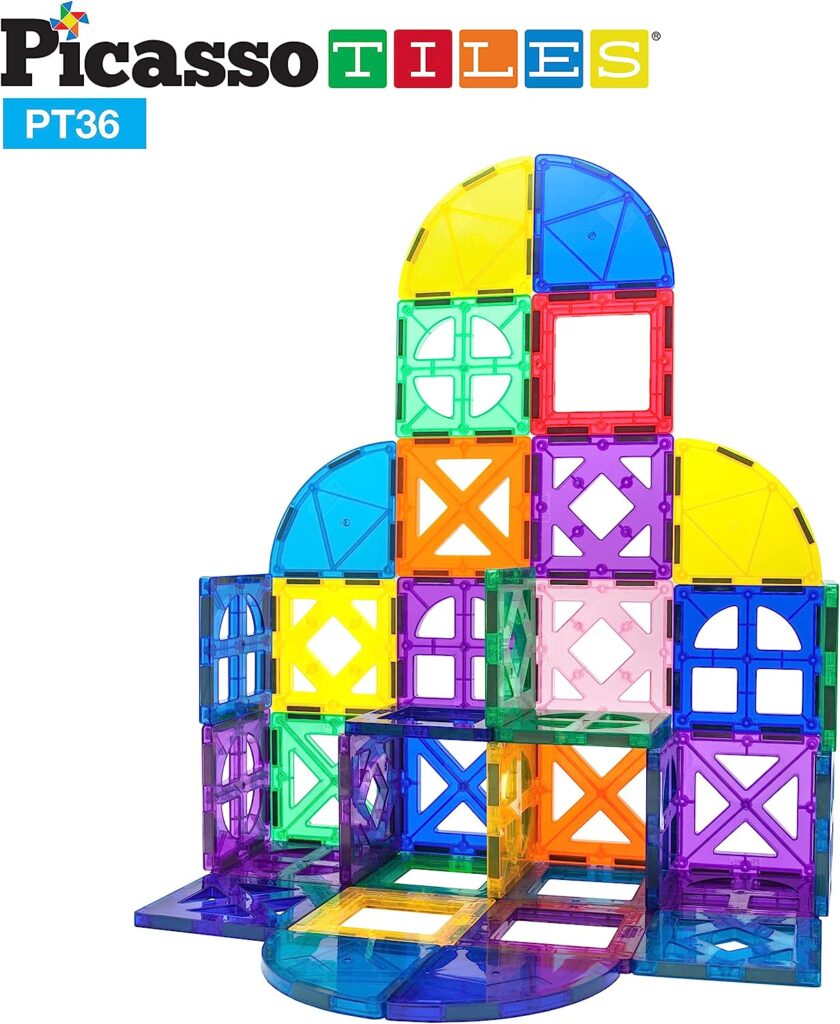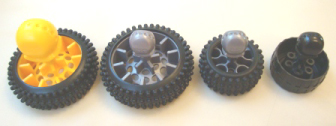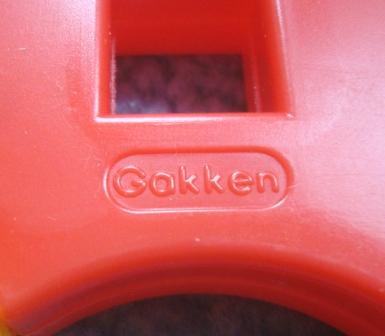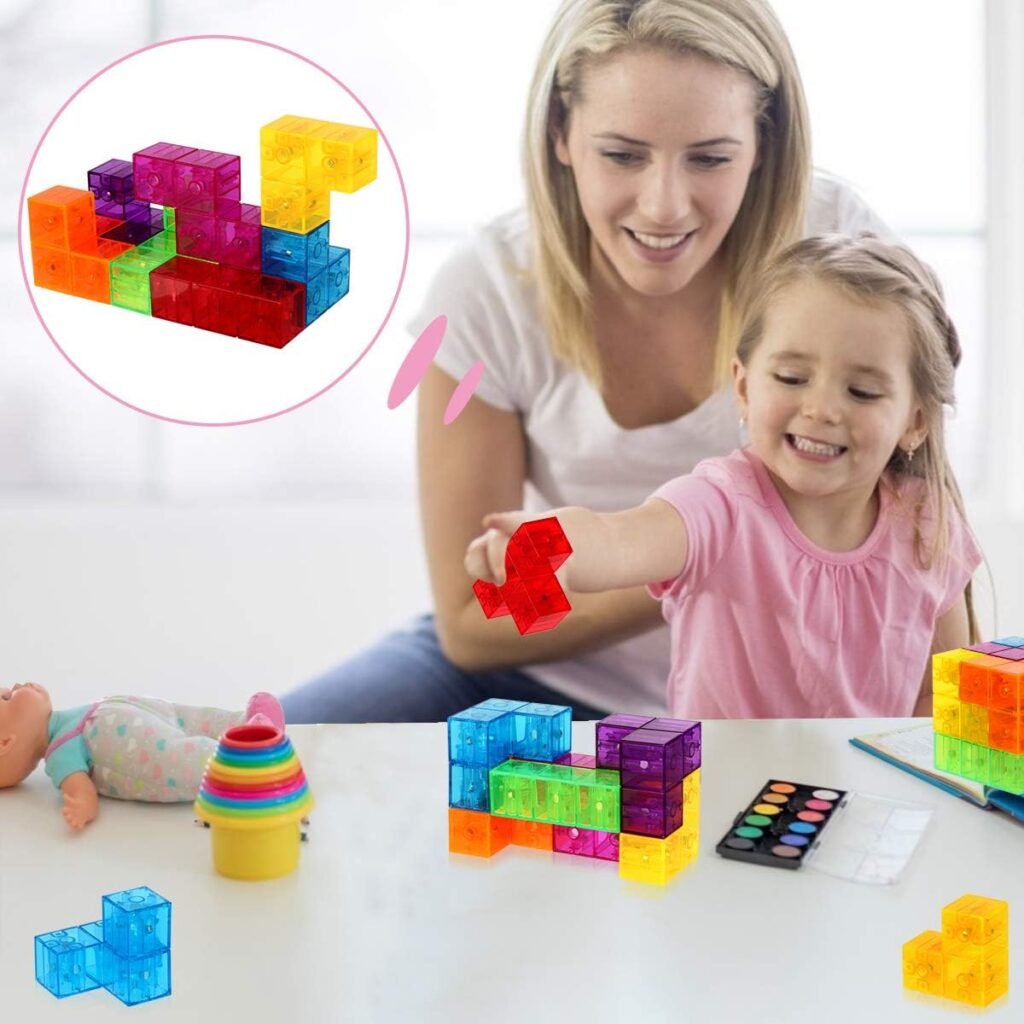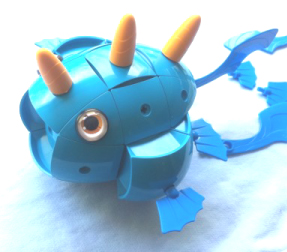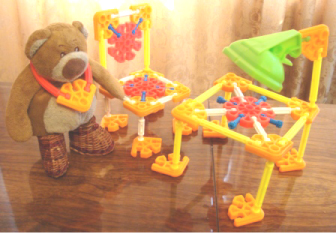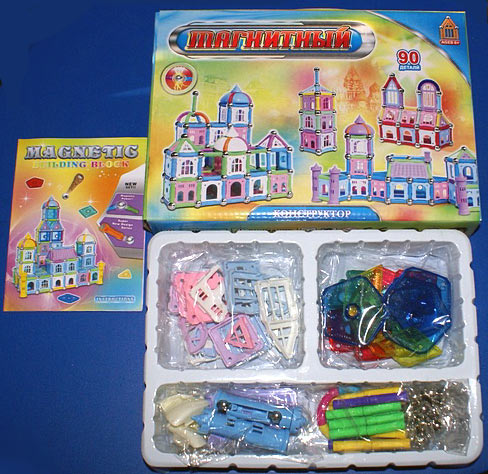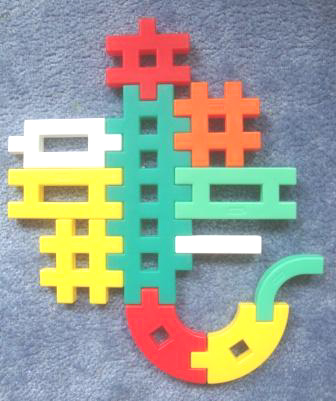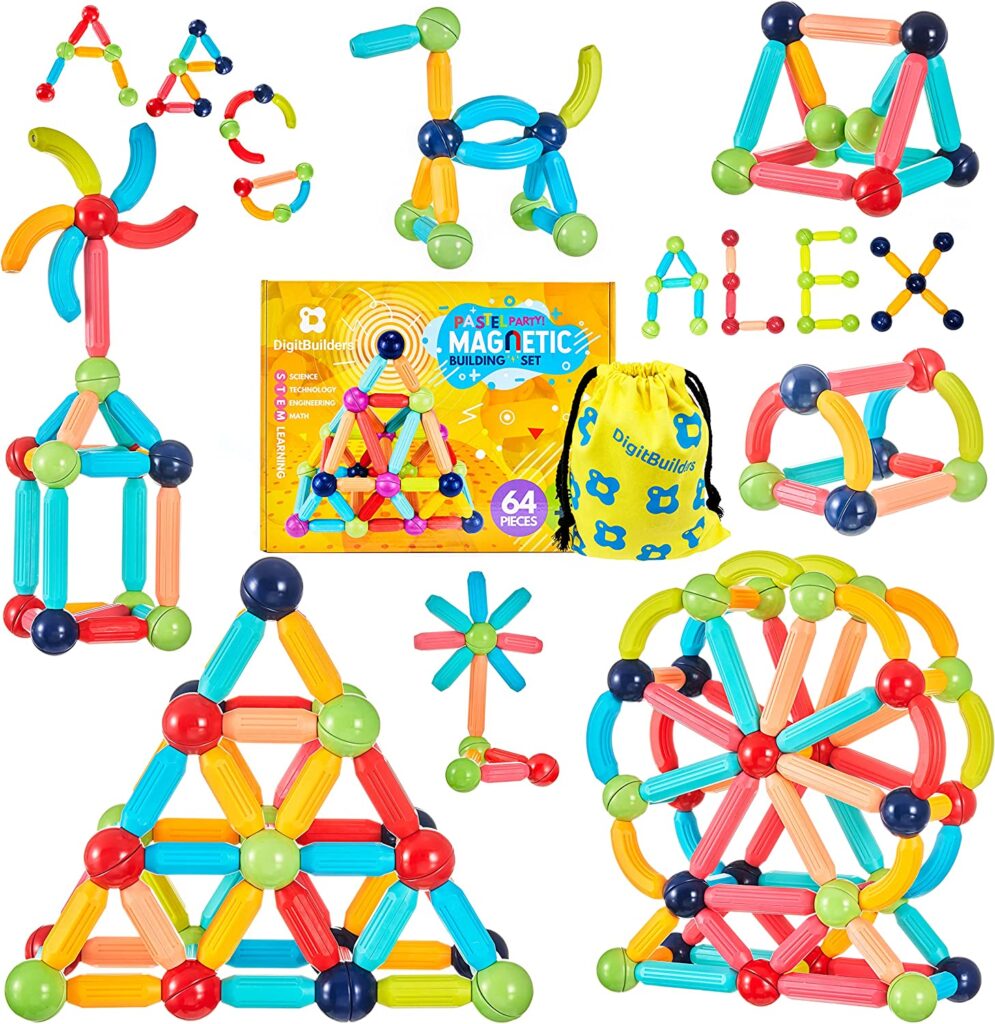In general, we liked playing with the Chinese magnetic constructor Castle (details below in the photo). As I expected, the children liked the openwork panels with windows, the original domes, and the corner towers. The color of the details, of course, is very specific, in a Chinese style – the towers are blue, the magnetic sticks are purple and green, the panels are pink… At first, castles and fortresses were built only from the details from this set. All five sets fit nicely in a small container. Magnets don’t come off. Now about the cons: the magnets in the sticks are weak, because of this, the panels are constantly shifting, the corner towers crumble into pieces and balls escape from there, the color of the sticks is a little depressing.


